What’s the Story behind the Silent Kokeshi Dolls in Japan?
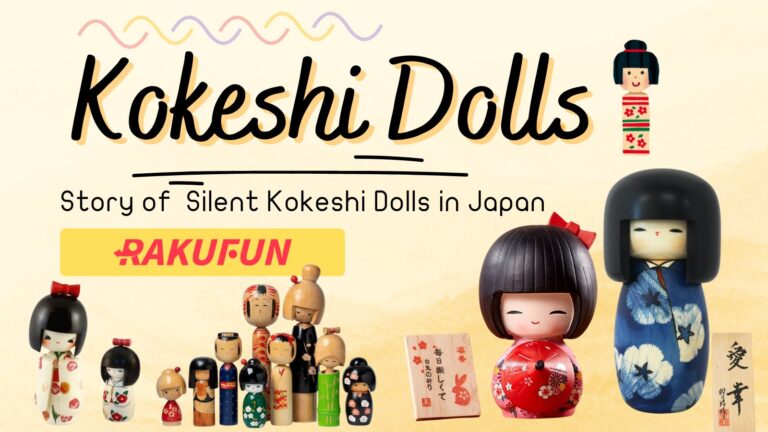
Beneath their serene, simplified faces and limbless wooden bodies, Japan’s Kokeshi dolls hold centuries of quiet stories. While many visitors to Japan encounter these charming dolls as souvenirs, few understand their deep roots in healing, spirituality, and regional identity. From their origins as hot spring companions for weary travelers to their modern reinterpretations by contemporary artists, Kokeshi dolls represent a fascinating intersection of folk art, regional economics, and cultural expression that continues to evolve today.
Thermal Beginnings: The Hot Spring Origins of Kokeshi
The story of Kokeshi begins in the Tōhoku region of northern Japan during the Edo period (1603-1868), where they emerged not as children’s toys but as something quite different. Nestled in the mountainous hot spring areas, skilled woodworkers known as kijishi traditionally crafted bowls and other household items. During the long winter months when farming was impossible, these artisans began creating simple wooden dolls that would become known as Kokeshi.
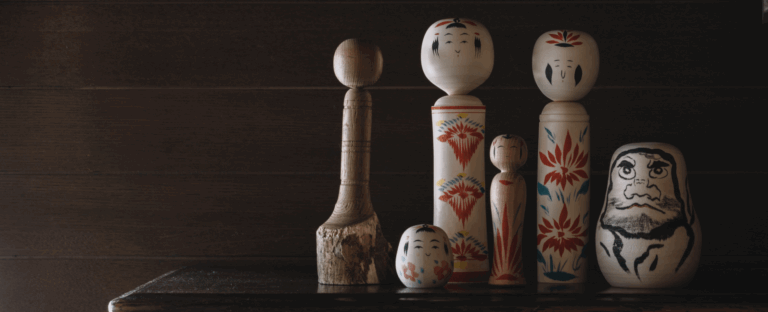
Historical evidence suggests these dolls served multiple purposes. For visitors to the region’s renowned hot spring resorts, they functioned as therapeutic massage tools—their cylindrical bodies perfect for rolling across sore shoulders and backs after bathing. They also served as comforting companions for children and, according to some accounts, as spiritual substitutes during times of high infant mortality. The dolls represented a form of sympathetic magic, where a wooden stand-in might protect a living child from harm or serve as a vessel for the spirit of a deceased one.
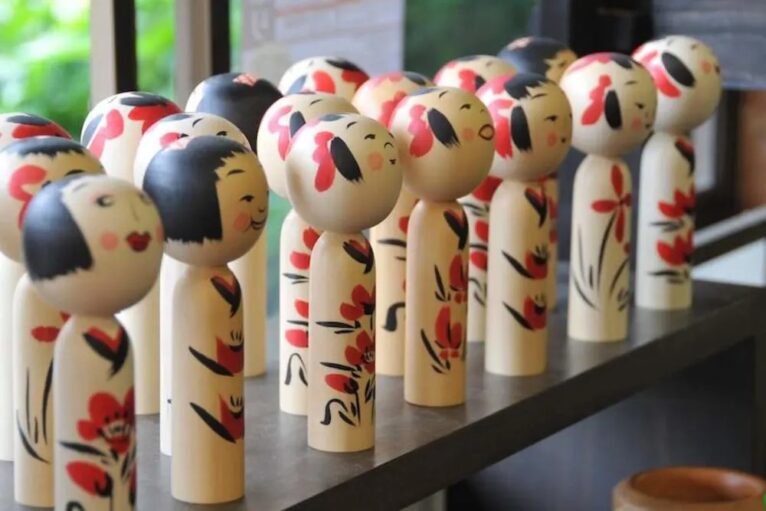
The name “Kokeshi” itself reveals interesting linguistic roots. While the exact origin remains debated, many scholars believe it derives from a combination of words referring to the doll’s construction: “ko” for small and “keshi” meaning to erase or eliminate, possibly referencing the minimalistic features. Others suggest it relates to regional dialects for wooden dolls or even the practice of “kidding” or creating substitute children.
The Eleven Schools: Regional Signatures in Wood
What many casual observers miss is that traditional Kokeshi are not a monolithic form but are categorized into eleven distinct schools, each with specific characteristics tied to their geographic origins. These classifications, known as dentō kokeshi, follow strict conventions regarding shape, pattern, and painting style that have been passed down through generations of craftspeople.
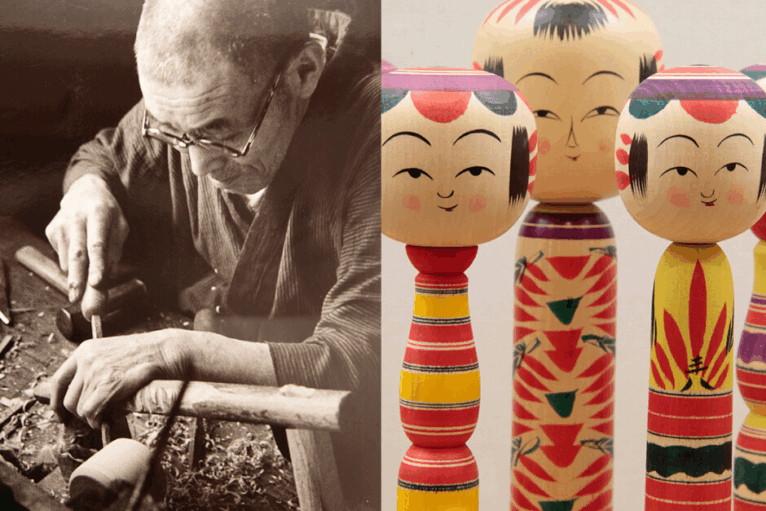
The Tsuchiyu style from Fukushima Prefecture features bold, radiating crown-like patterns on the head and a slender body with colorful floral designs. The Narugo style from Miyagi Prefecture is distinguished by its squeaking head that rotates separately from the body—a feature said to represent the cries of a baby or perhaps to ward off evil spirits. The Kijiyama style from Akita Prefecture showcases elegant, tall forms with sophisticated chrysanthemum and butterfly motifs painted in black and red.
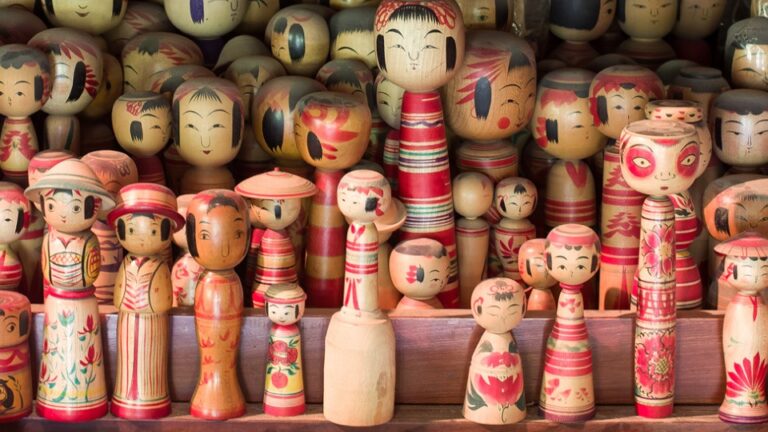
Each school’s distinctive features developed in response to local materials, techniques, and cultural influences. The wood used varies by region—dogwood, maple, and cherry being most common—and affects both the carving process and the final appearance. The painting techniques similarly reflect regional aesthetics, with some areas favoring bold, expressive lines while others preferred delicate, intricate patterns. These variations weren’t merely artistic choices but served as identifiable markers of origin, much like regional dialects or culinary specialties.
From Folk Craft to Art Form: The Transformation of Kokeshi
The 20th century marked a significant transformation for Kokeshi dolls as they evolved from regional crafts to nationally recognized art forms. The Mingei (folk craft) movement of the 1920s and 1930s, led by philosophers like Yanagi Sōetsu, played a crucial role in this transition. Yanagi and his colleagues championed the beauty of ordinary functional objects created by unknown craftspeople, seeing in them an authenticity missing from fine arts.
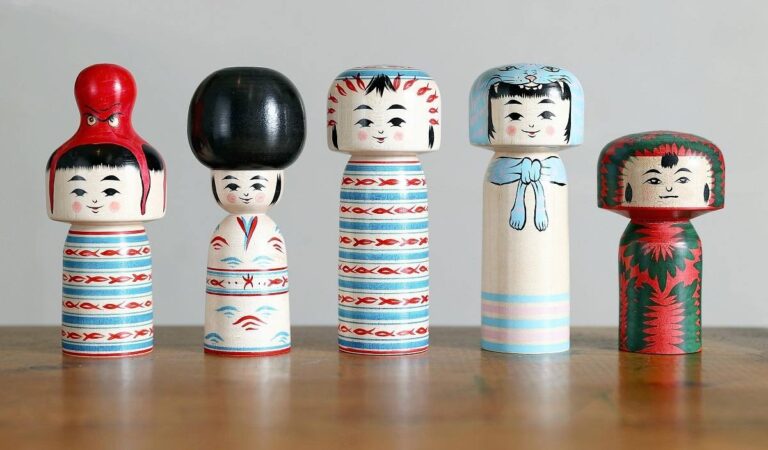
This philosophical movement coincided with the development of shingata kokeshi (creative Kokeshi) in the 1940s and 1950s. Unlike traditional Kokeshi bound by regional conventions, creative Kokeshi allowed artisans to express individual artistic visions while maintaining the basic form. This innovation transformed Kokeshi from primarily functional objects to collectible art pieces, opening the door for increasingly sophisticated and diverse interpretations.
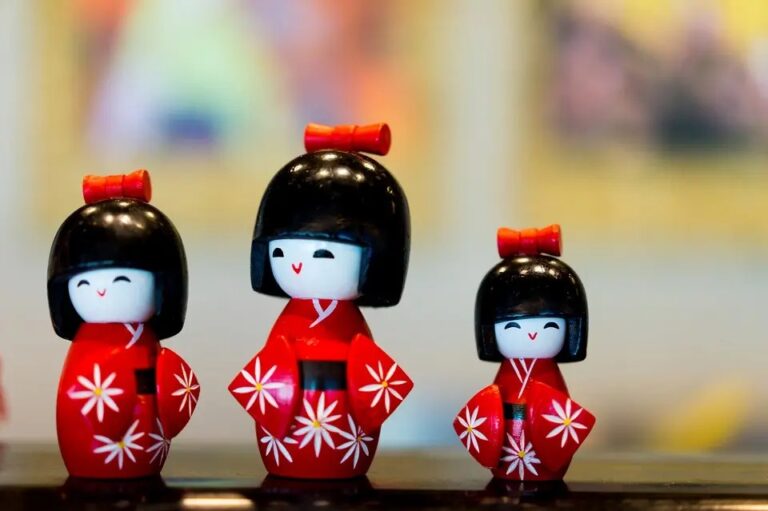
Postwar Japan saw Kokeshi dolls become symbols of Japanese culture both domestically and internationally. They appeared in government-sponsored cultural exports and became popular souvenirs for American soldiers stationed in Japan. This period also saw the establishment of the Japan Kokeshi Association in 1952, which worked to preserve traditional techniques while promoting innovation within the art form.
Contemporary Interpretations: Kokeshi in Modern Culture
Today, Kokeshi dolls have transcended their traditional boundaries to become canvases for contemporary artistic expression. Modern artisans create Kokeshi featuring pop culture characters, abstract designs, and even political commentary. Some artists use the traditional form to explore contemporary issues—creating Kokeshi with environmental themes or representing diverse human experiences beyond their original Japanese context.
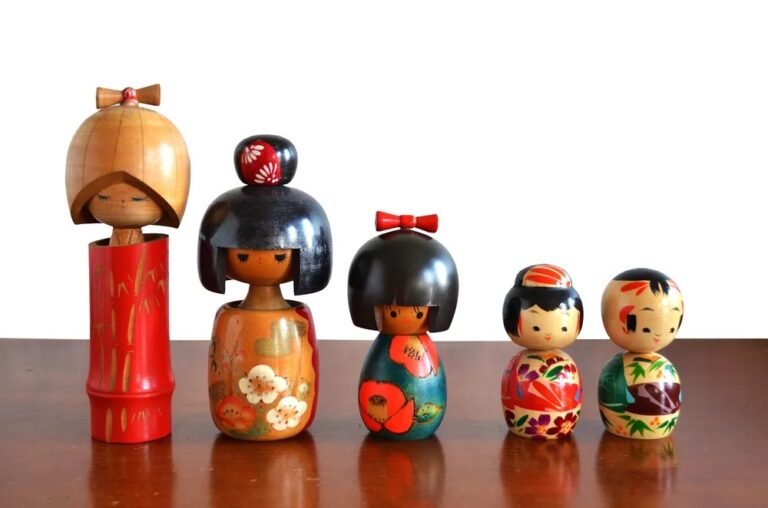
The influence of Kokeshi aesthetics extends far beyond the dolls themselves. Their distinctive visual language appears in fashion designs, stationery, jewelry, and home decor. Video game characters like those in Animal Crossing feature Kokeshi-inspired designs, while anime and manga frequently incorporate them as cultural markers. Luxury brands have collaborated with Kokeshi artisans to create limited edition pieces, bridging traditional craftsmanship with contemporary design.
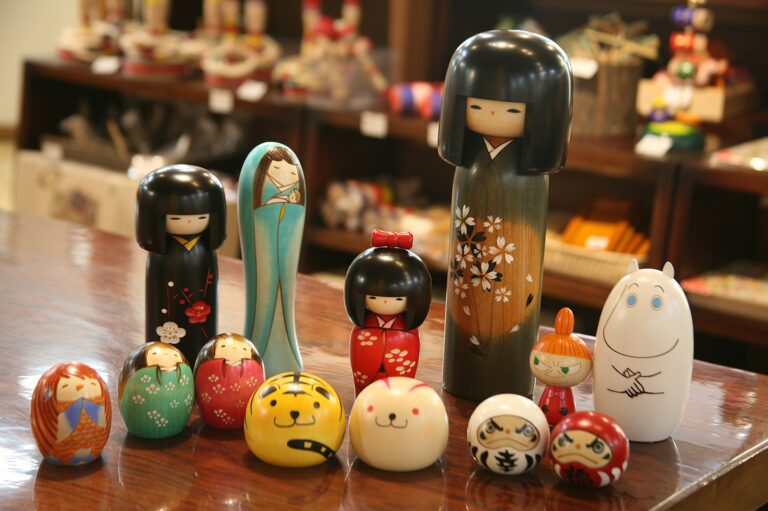
This evolution has sparked thoughtful debates within the Kokeshi community about preservation versus innovation. Traditionalists argue for maintaining the strict conventions of the eleven schools, while creative artists push the boundaries of what constitutes a Kokeshi. This tension between preservation and evolution reflects larger conversations happening across Japanese traditional arts as they navigate the 21st century.
Finding Kokeshi: Why Rakufun Bridges the Distance
For international buyers of Kokeshi dolls, accessing these pieces directly from Japanese artisans has traditionally been challenging. Mainstream export channels often prioritize mass-produced versions that lack the craftsmanship and cultural authenticity of true Kokeshi. This is where Rakufun serves as an invaluable bridge between Japanese craftsmanship and global appreciation.
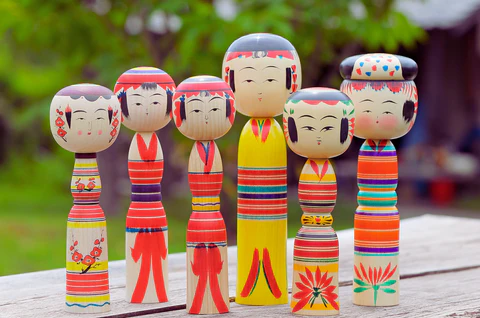
Rakufun is a professional Japanese proxy shopping service that provides international access to authentic Japanese products, including traditional crafts like Kokeshi dolls. Through Rakufun, enthusiasts can explore offerings from various Japanese sources including artisan websites, Mercari, Rakuten Marketplace, JDirectItems Auctions, and specialty craft stores that typically don’t ship internationally.
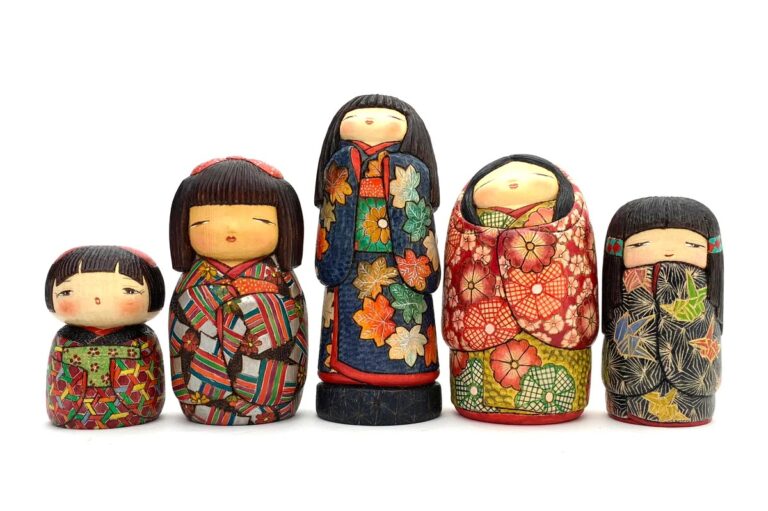
Rakufun simplifies what would otherwise be a complex process of international purchasing, handling everything from transaction and communication with sellers to international shipping and customs documentation. The service is particularly valued for its transparent pricing structure and customer support that helps navigate the nuances of purchasing traditional crafts from Japan.
The Continuing Narrative of Kokeshi
Kokeshi dolls represent far more than decorative objects—they embody regional identities, artistic evolution, and cultural continuity. From their practical beginnings in northern hot spring resorts to their current status as both preserved tradition and contemporary art form, these silent wooden narrators continue to tell stories about Japanese culture, aesthetics, and adaptability.
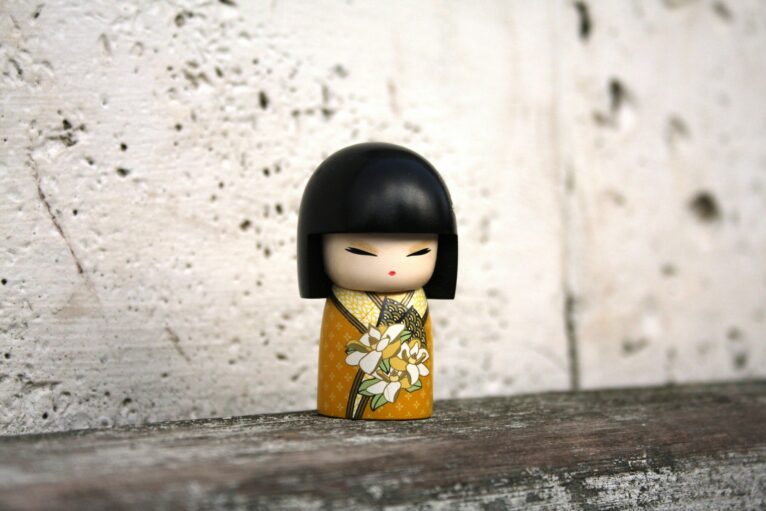
The most compelling aspect of Kokeshi may be their ongoing evolution. As new generations of artisans reinterpret this traditional form and as global audiences discover their appeal, Kokeshi dolls continue to accumulate meaning while retaining their essential character. They stand as testament to how traditional crafts can remain vital not through rigid preservation alone, but through respectful innovation that honors the past while speaking to the present.
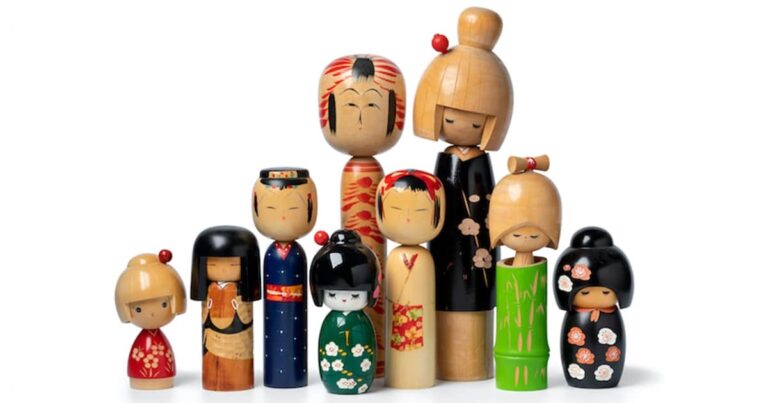
For those wishing to own a piece of this living tradition, services like Rakufun offer unprecedented access to authentic Kokeshi dolls and related items. Whether you’re drawn to the historical authenticity of traditional styles or the creative expression of contemporary interpretations, there’s never been a better time to explore the rich world of Japanese Kokeshi dolls and perhaps welcome one of these silent narrators into your own home.
Rakufun simplifies Japanese proxy shopping and global shipping, your all-in-one app for a seamless, fee-free experience:https://blog.rakufun.com/?p=9681

